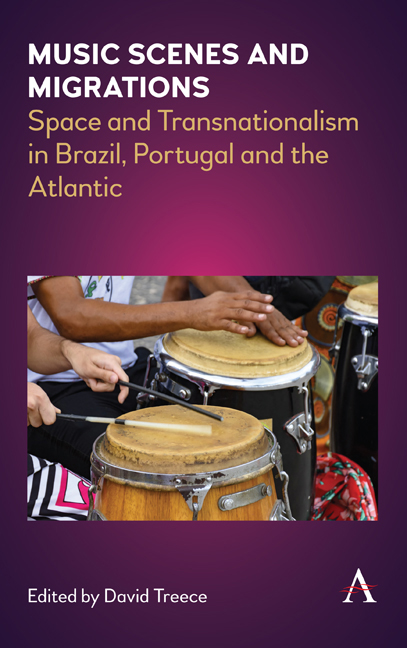Book contents
- Frontmatter
- Contents
- List of Illustrations
- Acknowledgements
- Introduction
- Part 1 Colonial and Postcolonial Transnationalisms, Migrations and Diasporas
- Part 2 Relocating Rio de Janeiro
- Part 3 Demetropolitanizing the Musical City: Other Scenes, Industries, Technologies
- Notes on Contributors
- Notes
- References
- Index
Chapter 15 - Digital Culture, Music Video, and the BrazilianPeripheral Pop Music Scene
Published online by Cambridge University Press: 20 January 2022
- Frontmatter
- Contents
- List of Illustrations
- Acknowledgements
- Introduction
- Part 1 Colonial and Postcolonial Transnationalisms, Migrations and Diasporas
- Part 2 Relocating Rio de Janeiro
- Part 3 Demetropolitanizing the Musical City: Other Scenes, Industries, Technologies
- Notes on Contributors
- Notes
- References
- Index
Summary
Introduction
In 2015, YouTube's top ten most viewed music videos inBrazil included six Brazilian artists: the funksinger Anitta; the exponents of the sertanejo universitáriogenre, Luan Santana, Michel Teló and Lucas Lucco;and the duos Henrique & Juliano and Marcos &Belutti. After comparing this listing to the onedisclosing the most viewed music videos on YouTubein Brazil during the previous four years – from 2012to 2015 – it is clear that there is a confirmedtrend in which sertanejo and funk singers predominate.
What is the significance of these listings? If weconsider the fact that YouTube is the main platformfor music consumption and the second most popularwebsite among Brazilian social networks users, notto mention that video viewings reach figures in therange of 100 million, we can claim that they reveala rather challenging radiography of musicalpreferences. There is a striking absence of othergenres historically established as deriving from theaesthetic sensibility of the urban middle classes –such as bossa nova,Música Popular Brasileira (MPB) and post-1980sBrazilian rock – asopposed to genres historically stigmatized as‘lowbrow music’ by those same middle classes.
My aim in this chapter is therefore to propose somequestions for the analysis of this scenario byfocusing on the musical genres within the toppositions in the aforementioned listings. Thehypothesis I intend to develop here is that socialnetworks – specifically post-MTV music videosproduced for YouTube – are fundamental actors responsible for bothincreasing the visibility of, and reshaping, thosegenres which previously circulated through narroweror more local circuits. Social media networksincrease their visibility and interconnect them,thus articulating a network of ‘peripheral’ popmusic, of which the listings are just the tip of theiceberg.
Accordingly, this chapter refutes the explanation thatthe rise of these genres necessarily leads to theimposition of the ‘mass culture industry’, arguinginstead that they circulate preferentially through asocio-technicalnetwork (Latour 1991, 1994, 2005)constituted by the articulation between producersand consumers from the ‘new middle class’, socialmedia networks and video clips, which are consideredin more detail below.
- Type
- Chapter
- Information
- Music Scenes and MigrationsSpace and Transnationalism in Brazil, Portugal and the Atlantic, pp. 165 - 174Publisher: Anthem PressPrint publication year: 2020



